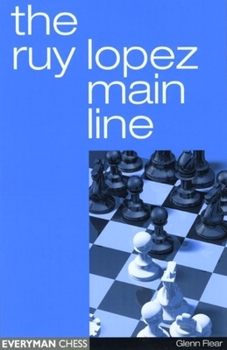The Dynamic Reti
Select Format
Select Condition 
Book Overview
The Reti Opening has been a popular choice at all levels of chess for many years and is a favourite among hypermodern players who like to control the centre with pieces. Yet there remains a dearth of published material on this subject ... until now. In The Dynamic Reti, Grandmaster Nigel Davies redresses the balance and advocates a repertoire for White based on this refined opening. Davies outlines the typical ideas and tactics for both White...
Format:Paperback
Language:English
ISBN:1857443527
ISBN13:9781857443523
Release Date:May 2004
Publisher:Everyman Chess
Length:144 Pages
Weight:2.40 lbs.
Dimensions:0.4" x 6.0" x 9.2"
Customer Reviews
3 ratings
Awesome opening variations I'd never dared think to try before!
Published by Thriftbooks.com User , 17 years ago
I have played the Reti now for some 35 years or so, and thought I knew pretty much all there was to know about it. However, the ideas presented forth in this book are some of the most forward thinking, unusual and viably practical thoughts that I have ever seen written down about the game. Imagine, in a Reti Accepted match after 2...dxc4, to be told to try 3.e4! instead of 3.Na3 or 3.Qa4+. And that it actually works! Davies comes up with many solid moves in different variations which are wholly workable and yet so entirely strange to see played in this particular game, but strange in a very refreshing way. I wholly recommend this book to anyone who loves the Reti but may be slightly tired of having a difficult time winning with it.
Over all I liked this book
Published by Thriftbooks.com User , 19 years ago
A 1.Nf3 player could be thought of as a d4 player who is chicken of the Nimzo! But when you study 1.Nf3 you learn to appreciate it more for what it is. To really master this opening, you have to learn to pick and choose from several openings. Where I like his book is on the Closed Reti, Reverse Benoni Reti, and the Reti Accepted. I think he has some great ideas in there. But when it comes to this books section on the Slav Reti. Well the lines he gives white has to sacrifice a pawn. I don't buy it white gets compensation in these lines he suggests. Against the Slav Reti I think the best way to go against it is go into the Slav! That is where I said you got to pick and choose. When to go into an English or d4 opening or stick with the Reti. Over all I liked the book very much.
An Early Bloodbath Avoidance System
Published by Thriftbooks.com User , 20 years ago
A self-styled chess romantic would probably cringe at the notion of taking up the Reti Opening. Among amateurs, it has a reputation for pusilaminity. Many beginners do not shirk from engaging in hand-to-hand combat right out of the opening. Yet, with time, I have come to see the dark side of trying to play a theory intensive opening repetoire which allows an opponent significant counterplay. David Bronstein once said that to gain winning chances, one has to grant some concessions to one's opponent. There is another school of thought to this idea of seeking dynamic imbalance as the catalyst for victory. Many masters are happy to play in an environment where they are not facing an attack out of the opening, where the deployment of their pieces are in an easy to follow plan, and yet there is still "something" there for the white player to work with. Players like Botvinnik, Larsen, Petrosian, Miles to name only a few, have been quite happy to play openings like the Reti. The opening has made appearances at the highest level of competition. I can think of Reti-Capablanca 1924, Alekhine-Euwe 1937, Petrosian-Tal 1962, Korchnoi-Karpov 1974, and Kasparov-Karpov 1987. The Reti allows broad scope for original maneuvering in the middlegame, and the possibility to outplay an opponent strategically. At the non-professional level, I would argue that it is in the best interest of a chessplayer to cut down as much as possible in the amount of theory one has to study. Why? because the amateur needs to spend time studying other things, like endgames and middlegame books (how to do this effectively is something else entirely though..) To go further, I would say that one should try and play openings which will be forgiving of less-than-exact play. The Reti fits this perfectly (I would also recommend similar openings like the Barcza or the Catalan). The key motif of the Reti is the early securing of the white king in a kingside fianchetto. I tend to think it is a good idea for beginners to play this way, as they tend to survive longer. Now, to get to specifics, the nature of white's "pull" in the Reti is subtle, so a slight error by white can allow black to equalize fairly quickly. Yet even if black can swing the position around to his favor, the white king position is still a tough nut to crack. Now to get to the meat of this book. The only other book to cover the Reti in recent times is "the easy guide to the Reti" by Dunnington. I would recommend this book as well, although there are differences in style and in the lines emphasized. The "Dynamic Reti" is better as a complete repertoire book. Having spent so much time talking about theory avoidance, I will now say that there is a body of theory to the Reti and related systems, and if one has any pretensions to getting anything out of the opening, one had best study it. One nice thing about the Reti is that if one studys it for just a short time, and then plays it against someone unfamiliar with it, I am still amazed





